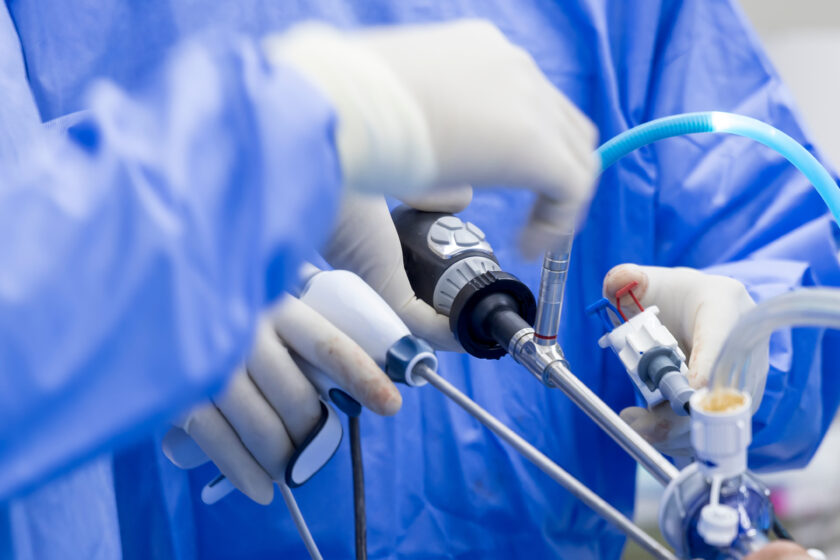Artroskopowa rekonstrukcja więzadła krzyżowego ACL
BCM
19 września 2023

U
szkodzenie więzadła krzyżowego przedniego (ACL-ang. Anterior Cruciate Ligament, czyli potocznie zerwanie CL) to częsty uraz, szczególnie u osób aktywnych, często uprawiających sport. Większość przypadków kwalifikuje się do leczenia operacyjnego. Rekonstrukcja ACL może być wykonana na kilka sposobów. Jednym z nich jest artroskopowa rekonstrukcja więzadła krzyżowego ACL przez pobranie ścięgien mięśni: smukłego i półścięgnistego od operowanego pacjenta i rekonstrukcja ACL przy ich pomocy. Przy odpowiednim przygotowaniu przeszczepu jego wytrzymałość jest tak samo wysoka jak zdrowego ACL. Więzadła łączą kości ze sobą. Więzadło jest zlokalizowane w stawie kolanowym – zaczyna się na udzie, a kończy na piszczeli. Przyśrodkowo, nieco z tyłu uda biegną mięśnie, których ścięgna są pobierane do przeszczepu-smukły i półścięgnisty. Ich przyczep końcowy znajduje się poniżej kolana, na kości piszczelowej. Ich funkcja polega między innymi na zginaniu nogi w kolanie.
Rekonstrukcja ACL – na jakie urazy?
Najczęstszą przyczyną uszkodzenia więzadła krzyżowego przedniego jest uraz sportowy. Dominują sporty, w których występuje nagła zmiana kierunku ruchu, m.in. piłka nożna czy narciarstwo. Urazy te pozwalają lekarzowi skierować chorego do szpitala, gdzie wykonywana jest artroskopowa rekonstrukcja ACL.
Objawy ACL
Uszkodzenie więzadła krzyżowego powoduje niestabilność stawu. W fazie ostrej występuje również obrzęk i ból stawu, często z ograniczeniem jego ruchomości. Zerwanie ACL ma również wpływ na stan pozostałych struktur stawowych-łąkotek, chrząstek, innych więzadeł, które często również zostają uszkodzone podczas urazu.
Rekonstrukcja ACL – diagnostyka
Wstępną diagnozę często stawia się już po zebraniu wywiadu i badaniu klinicznym stawu, a potwierdza się ją poprzez badanie diagnostyczne-rezonans magnetyczny stawu kolanowego. Wtedy również wiadomo co dokładnie dolega pacjentowi oraz jak duże jest zerwanie ACL.
Leczenie
Leczenie w większości przypadków jest operacyjne. Artroskopowa rekonstrukcja ACL – więzadła krzyżowego ma na celu odtworzenie funkcji ACL, czyli zapobieganie nadmiernemu przesuwaniu się piszczeli do przodu, względem kości udowej-poprawa stabilności kolana.
Rodzaj operacji
Artroskopowa rekonstrukcja ACL polega na wykorzystaniu technik małoinwazyjnych. Operacja przeprowadzana jest artroskopowo. Oprócz dwóch portali artroskopowych w miejscach typowych, wykonywane jest trzecie, dłuższe (około 3-4 cm) nacięcie poniżej kolana-jest to konieczne, aby pobrać ścięgna do przeszczepu. Podczas przygotowywania przeszczepu do rekonstrukcji lekarz ocenia staw, zaopatruje inne uszkodzenia (na przykład uszkodzenia łąkotek) i przygotowuje miejsce dla nowego więzadła-usuwa pozostałości uszkodzonego ACL, starannie planuje umiejscowienie przeszczepu. Następnie, wykorzystując porty artroskopowe i miejsce po pobraniu ścięgien, lekarz nawierca kanały w kości udowej i piszczelowej oraz umieszcza uprzednio przygotowany przeszczep w odpowiedniej pozycji. Po zamocowaniu przeszczepu i kontroli jego funkcji następuje szycie ran, umieszczenie drenów i założenie jałowego opatrunku. Najczęściej jeszcze na bloku operacyjnym, zakładana jest także orteza stawu.
ACL
W większości przypadków dzień po tym, jak wykonana została rekonstrukcja ACL, usuwane są dreny, a pacjent wstaje z łóżka z pomocą kul łokciowych. Operowana noga utrzymywana jest w ortezie. Jeżeli wszystko jest w porządku, pacjent wypisywany jest ze szpitala. Po wypisie należy jak najwcześniej rozpocząć rehabilitację. Rehabilitacja po zabiegu rekonstrukcyjnym jest kluczowa. Należy rozpocząć ją do 5 dni od zabiegu.
Artroskopowa rekonstrukcja ACL w Szpitalu Zakonu Bonifratrów wykonywana jest przez zespół specjalistów w dziedzinie ortopedii i traumatologii:
- lek. Stanisław Szymanik – Kierownik Oddziału Diagnostyczno-Leczniczego
- lek. Michał Latos
- lek. Michał Starmach

